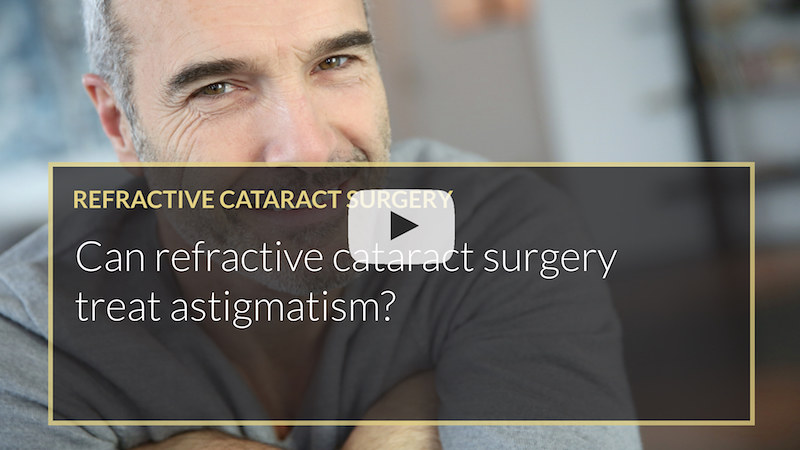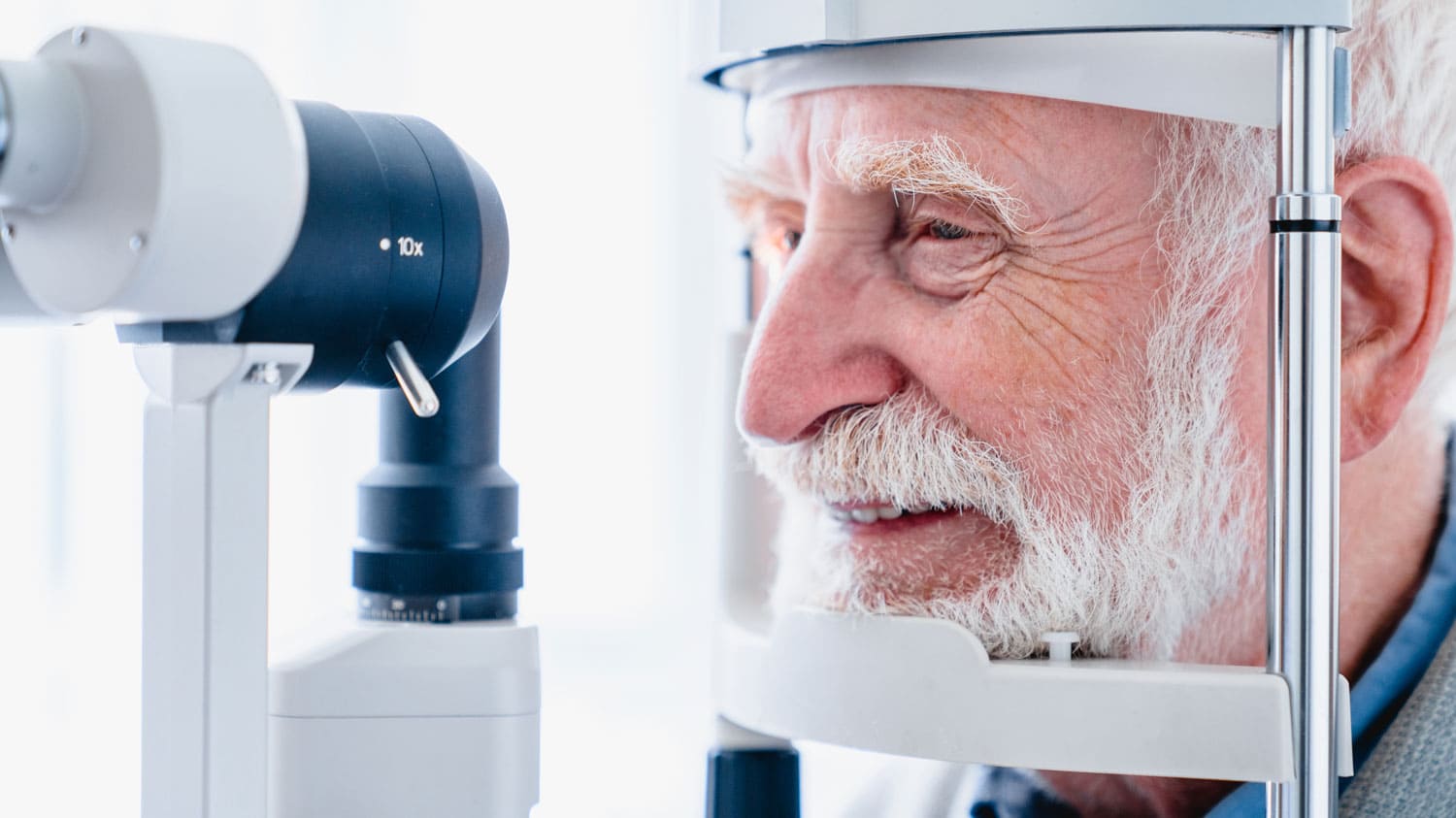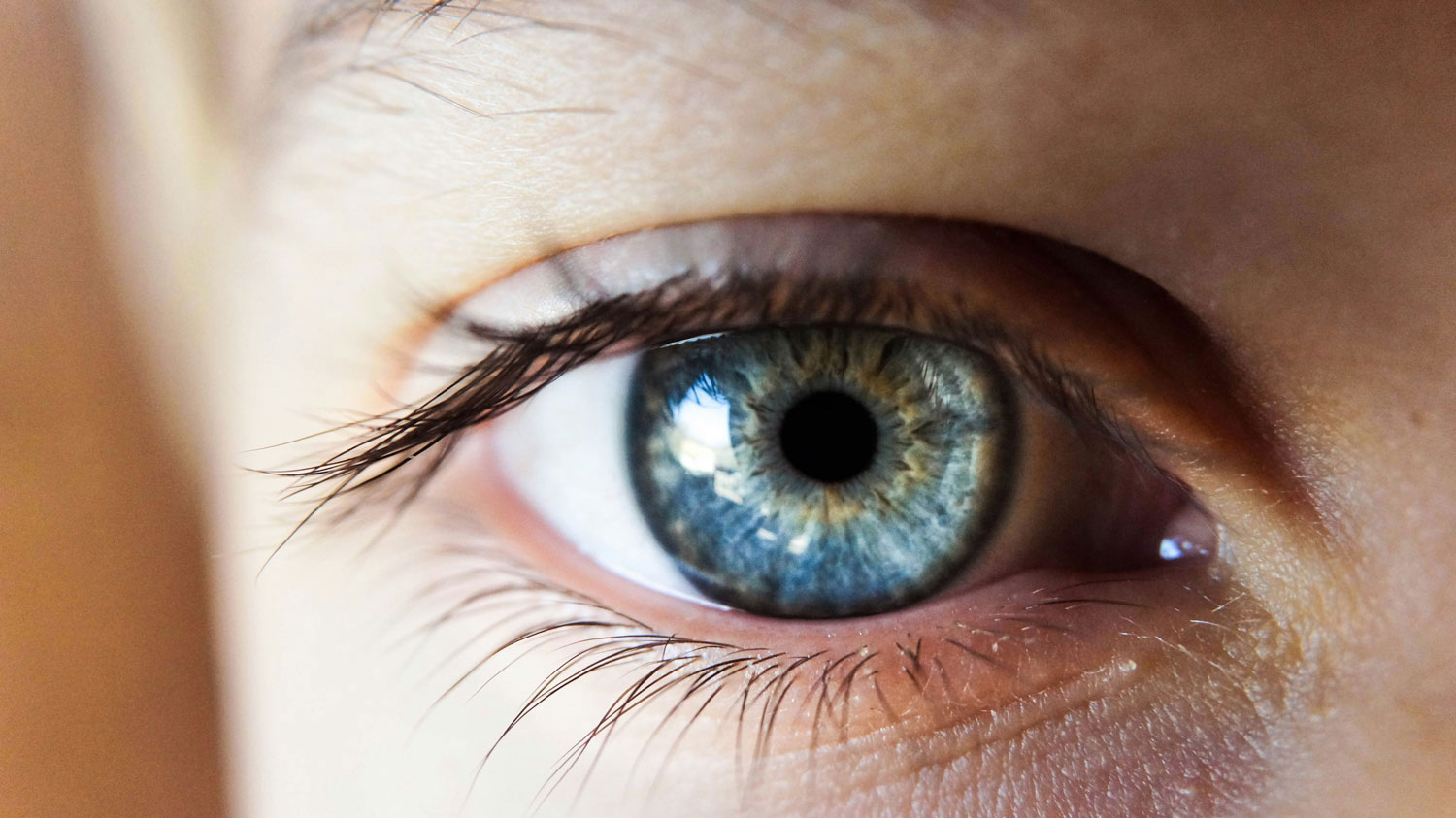
IN THIS VIDEO, PROF MOHAMMED MUHTASEB REVEALS IF REFRACTIVE CATARACT SURGERY CAN TREAT ASTIGMATISM
Can refractive cataract surgery treat astigmatism?
A lot of patients ask whether they can have a cataract procedure or refractive lens exchange or certain kinds of lens implants, and treat their astigmatism at the same time.
We can treat astigmatism at the same time as a refractive cataract or refractive lens exchange procedure.
Astigmatism is on people’s minds. For lots of patients, their optometrist may have told them that they had had astigmatism for many years; if not, since childhood. Patients must understand what astigmatism is and what would happen if they don’t get it treated as part of the cataract surgical procedure or with refractive lens exchange. I like to take quite a bit of time to explain what astigmatism is, its effect on the vision and the benefits of toric lens implants for treating astigmatism. It’s worth going through that explanatory procedure using visual props because I find that these are very useful for patients.
Astigmatism is an asymmetry in the curvature of the cornea. The curvature of the cornea is horizontal, vertical and spherical in all directions. I use my squidgy basketball, and I explain to patients that the cornea (at the front of the eye), should be spherical so that it’s vertical and horizontal curves are the same. However, if you take a spherical structure and squeeze it, you get astigmatism, which is an asymmetry between the vertical and the horizontal curvatures; one is steeper, and the other is flatter. Therefore, an asymmetrical cornea treats that light coming in from different directions differently, causing a degree of blurring or distortion of the vision.
Now astigmatism has a degree (an amount) that, with a spectacle prescription, could be corrected by half or one, two, five or seven diopters; the bigger the number, the greater the asymmetry. The more you squash the sphere, the bigger the asymmetry and the bigger the spectacle prescription you need. When it comes to lens implants, the greater the astigmatic correction on the lens implants. If you squash the ball in one direction, you get an asymmetry vertically and horizontally. But if you squash the ball obliquely, you get asymmetry in these oblique directions. So, astigmatism has a degree, a magnitude, and it has a direction. Now, that means that the vision can be distorted to certain degrees and in certain directions if it’s not corrected either by glasses or by a lens implant. So patients will, without correction, see something along these lines (see video for demonstration) – there’s a letter V seen without astigmatism. Next to it are letters demonstrating how a patient would see the letter if the astigmatism is not corrected; you see ghosting, either vertically, horizontally, or oblique.
When it comes to reading, patients may see clearly if the astigmatism is corrected or if they don’t have astigmatism. If there is astigmatism, you get this fuzzy appearance. Astigmatism is like long-sightedness and short-sightedness: it’s another degree of what we call a refractive error, and it’s another way in which the vision can become blurry or distorted.
Astigmatism can be corrected either with a spectacle prescription or at the time of refractive cataract surgery or refractive lens exchange, with the type of lens implant that you have.
Here is a monofocal lens and this is a multifocal lens (see video for demonstration). We can manufacture these lenses so that either one can correct astigmatism and/or long-sight or short-sight. It’s like having astigmatism corrected in spectacles, but instead, it’s corrected by the lens implant that goes inside the eye.
When we insert a non-toric lens implant into the eye, it doesn’t matter which way around we position it if there’s no astigmatism. However, because astigmatism has a magnitude and a direction, a toric lens – which has marks on it – has to be placed in the eye and perfectly aligned with the direction of astigmatism on the cornea.
I will make sure that all the appropriate tests are undertaken before the surgery so that the direction and the degree of astigmatism are accounted for in planning for the lens implant.
One of the things that patients want to know about is whether it’s okay to have refractive cataract surgery or refractive lens exchange, even though they have astigmatism – the answer is yes. Then they want to know how the surgery corrects astigmatism. We do that by planning the lens choice appropriately and undertaking calculations additionally to the test that we do preoperatively. Those tests gather the data that we need, and that data is placed into a program that calculates the strength of lens for distance, near sight and astigmatism. Those calculations are very sophisticated and intricate to optimize the outcomes. We then need to place the lens in the correct location inside the eye and the correct orientation to optimize the visual outcome. The objective of doing all of that is to avoid that fuzzy vision after the surgery that would require glasses to correct it if we hadn’t corrected it during the surgical procedure.
I invite you to book a consultation to determine your suitability for refractive cataract surgery or refractive lens exchange. It’s the only way to determine your suitability for these procedures and to have an in-depth discussion regarding the risks and benefits of each of them. I look forward to seeing you there and taking you through the journey to achieving your desired postoperative outcome.
Share This Story, Choose Your Platform!
ABOUT THE EXPERT
Prof Mohammed Muhtaseb, FRCOphth
Consultant Cornea, Cataract and Refractive Surgeon
iLase is the private practice of Consultant Ophthalmic Surgeon, Prof Mohammed Muhtaseb. Based in South Wales, he is one of the very few ophthalmologists working in the UK who is a fellowship-trained specialist in Cornea, Cataract and Refractive Surgery. He holds full specialist registration with the General Medical Council and was appointed as a Consultant in the NHS in 2006.




